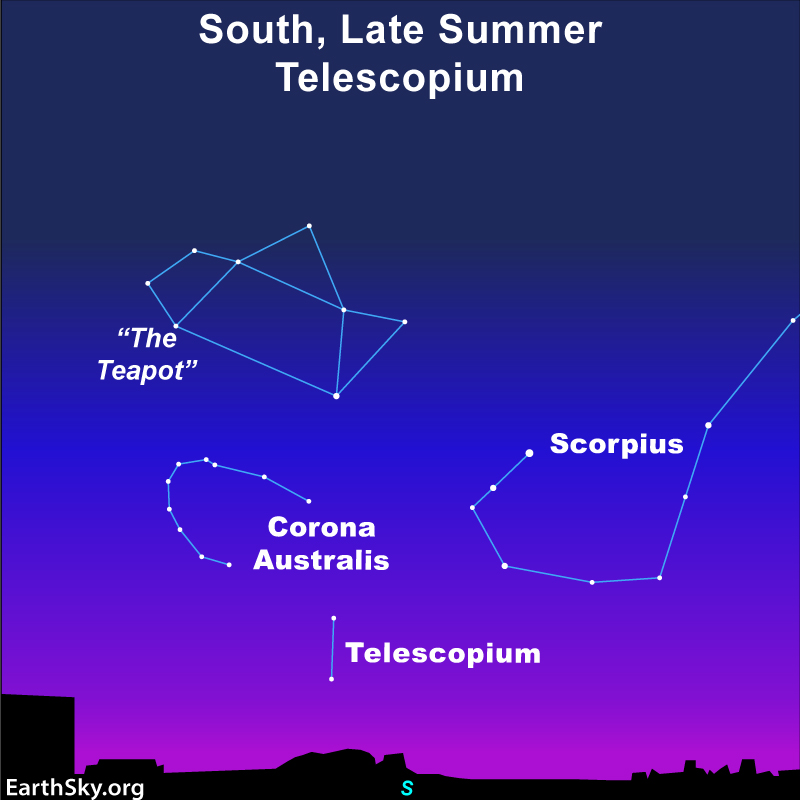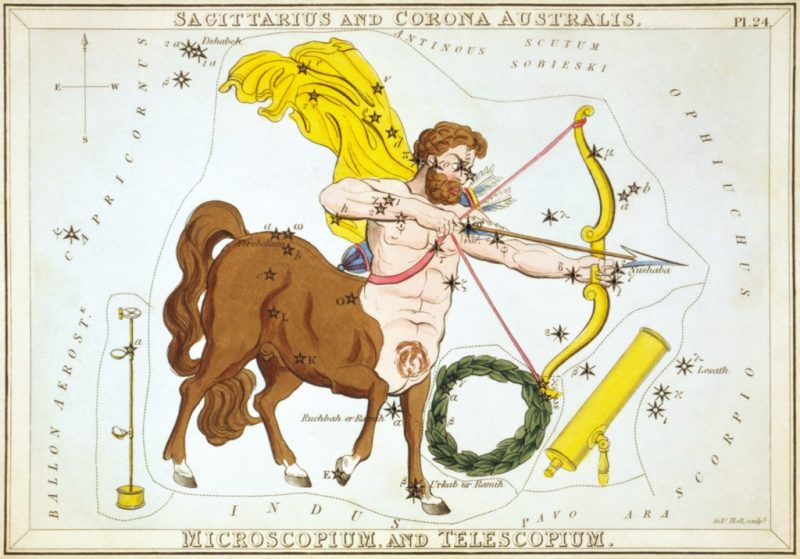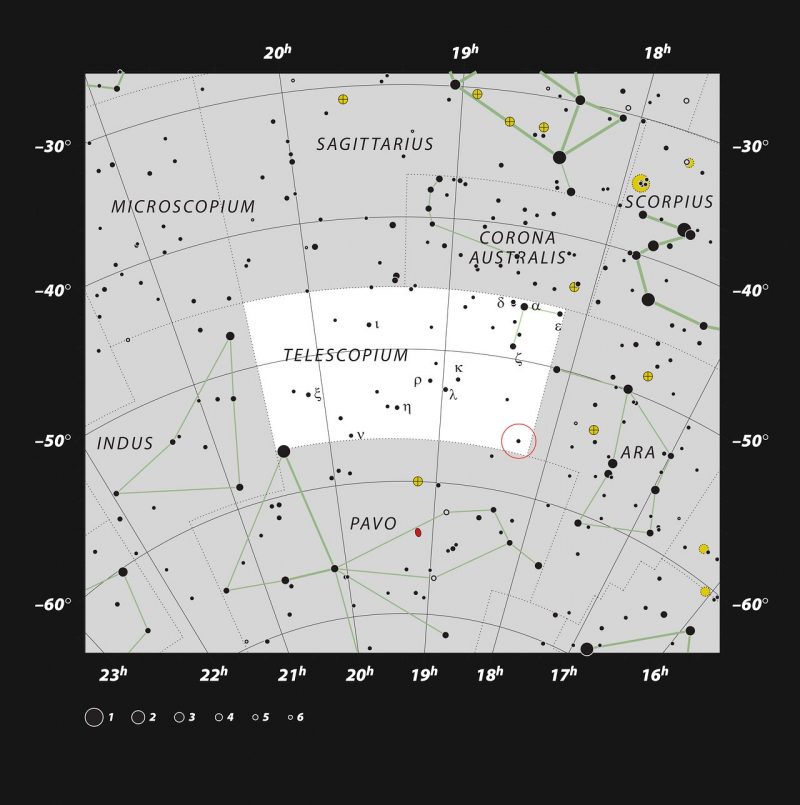
If you live toward the south in the Northern Hemisphere, you have a window in late summer and early fall when you can spot the diminutive constellation of Telescopium. Location alone is not enough, however. You’ll also want dark skies. Even the brightest star in Telescopium is rather dim: magnitude 3.49 Alpha Telescopii. Perhaps Telescopium is a fitting name, because to view anything in this constellation you’ll benefit from a telescope. In 2020, astronomers discovered the closest black hole to Earth, 1,000 light-years away, in a corner of Telescopium.
Nicolas Louis de Lacaille visited the Southern Hemisphere in the 18th century. He gave names to 14 new constellations. He named Telescopium in honor of the scientific instrument he used.
How to find Telescopium
Technically, most locations in the United States and others around 40 degrees North latitude will have the main stars in Telescopium rise above their horizon. But, when you consider buildings along the southern horizon, light pollution and the dim stars of the constellation, your best bet is to be further south.
With this in mind, find the Telescope by first finding brighter constellations above it. The Teapot of Sagittarius and the curving tail of Scorpius the Scorpion are the perfect places to start. If, however, the Scorpion is dragging its tail along the horizon from your point of view, you’re out of luck.
Also, if you look below the half of the Teapot that is closest to Scorpius, past the arcing curve of Corona Australis, you may spot two rather dim stars. One is on top of the other. These two stars are all that make up the shape of Telescopium the Telescope.

Stars and a black hole in the Telescope
The brightest star in Telescopium is Alpha Telescopii at magnitude 3.49. It lies 249 light-years away.
Its second brightest star is just 3 degrees to the south: 4.09 Zeta Telescopii. It lies 127 light-years away.
Then, less than a degree to the southeast of Alpha is the double star Delta 1 and Delta 2 Telescopii. The brighter member, Delta 1, lies 795.5 light-years away and shines at magnitude 4.92. Delta 2, conversely, lies 1,116.9 light-years away and shines at magnitude 5.07. The pair lies less than 10 arcminutes apart.
In 2020, the European Southern Observatory announced the discovery of the nearest black hole to Earth. Indeed, at just 1,000 light-years away, this black hole lies in the direction of Telescopium. The black hole’s two companion stars lie at the southwest corner of Telescopium. They are indicated by the red circle on the map below.

Bottom line: Telescopium the Telescope is a constellation that appears best in southern skies. It contains the closest black hole to Earth.











